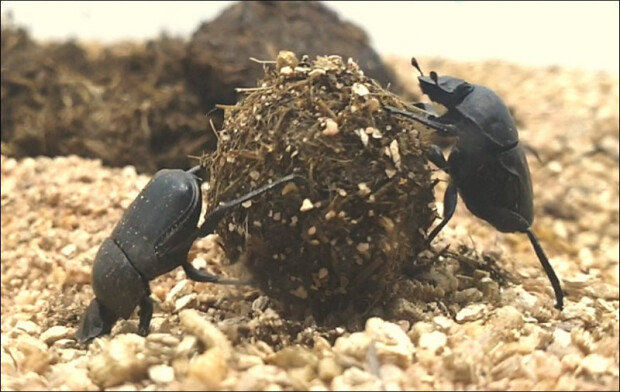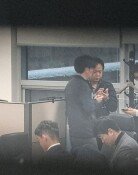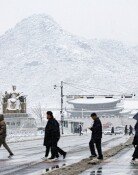Dung beetles evaluated to be extinct in S. Korea
Dung beetles evaluated to be extinct in S. Korea
Posted April. 26, 2023 07:48,
Updated April. 26, 2023 07:48

The familiar Korean dung beetle called “soddongguri” (pictured) has been confirmed to have gone extinct in South Korea, and the Korean diving beetle known as “mulbanggae” was also found to be in danger of extinction.
The National Institute of Biological Resources under the Ministry of Environment published a red data book on Insects II (beetles) and Insects III (aquatic insects). The publication revealeduated a total of 710 species of insects in Korea, including 340 species of beetles and 361 species of aquatic insects recorded in the red data book on endangered fauna and flora of South Korea, which was published in 2012.
The domestic species of dung beetles in South Korea have not been officially observed since the 1970s. Dung beetles are good insects that decompose animal feces by consuming them. They were once common when cattle were allowed to graze freely. Still, their population plummeted due to the increase in factory farming and the widespread use of antibiotics in the livestock industry. There are other dung beetles, such as “royal dung beetle” and “long-legged dung beetle,” but they are classified as different species from the dung beetles that have been found to be extinct this time.
The environment ministry of South Korea issued a bid announcement in 2017, offering 50 million won for those who can import 50 live dung beetles to restore the species. Since then, there have been some reports of sightings of dung beetles, but none have been confirmed to be true. Currently, the National Center for Endangered Species Restoration is pushing for a project to breed dung beetles imported from Mongolia in a bid to restore their population.
Mee-Jee Lee image@donga.com
Headline News
- Trump’s proposed tariffs on Mexico, Canada, and China spark global trade concerns
- Samsung C&T and partners secure 5.2 trillion won Qatar plant order
- Seoul launches early-morning autonomous bus service
- Kiwoom Heroes signs with outfielder Yasiel Puig
- Lee acquitted of subornation of perjury charges in first trial







